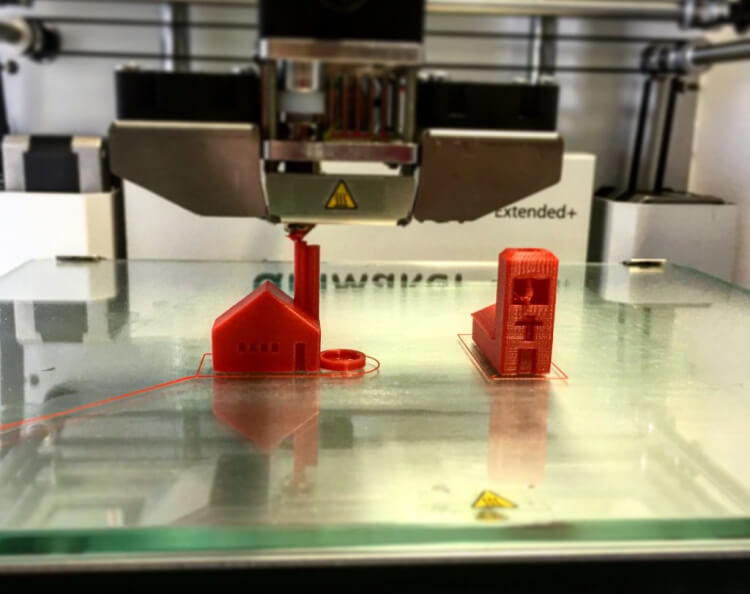The typical supply chain is often praised for its efficiency. After all, it’s a process that has been refined and remastered over the years to incorporate the latest innovations, technology, and methodology. While it’s a highly efficient process, it’s not without its flaws.
Most supply chains involve an extensive design process upfront. This is immediately followed by sourcing the necessary materials, which can be both lengthy and costly. It’s only after this step that you can begin making progress on the finished parts. With so many moving parts, it’s difficult to maintain status as a model of organizational efficiency. However, the manufacturing and logistics industries are on the cusp of a new revolution. 3D printing promises to change how supply how the supply chain operates and businesses are starting to take notice.
Effects on shipping, inventory, and production
Manufacturing leaders at GE are committed to 3D printing in the future. Whereas most consumers are familiar with machines that print with plastic, GE recently made headlines for their development of the world’s largest additive machine for 3D printing. The device is spearheaded by a new business division known as GE Additive.
But GE doesn’t have to wait for their new machine. They’ve already announced plans to manufacture 40,000 jet fuel nozzles by 2020. GE is also designing an Advanced Turboprop that replaces more than 850 parts of a normal aircraft engine with only 12 3D-printed components. It is expected to run within a Cessna Denali aircraft by the end of 2017.
They’re also making some serious financial investments into the sector of 3D printing. GE invested more than $1 billion in the technology through new acquisitions in 2016 alone, and they plan to expand their GE Additive business by an additional $1 billion within the next few years. All of this comes in addition to the $1.5 billion GE has invested in 3D printing since 2010.
GE isn’t alone in the race to use 3D printing in vehicle and engine design. Boeing and Airbus have both made significant investments in the technology and automotive manufacturers have been 3D-printing highly detailed prototypes for years.
UPS creates a nationwide network of 3D printing facilities
One of the biggest disruptions to the modern supply chain comes in the form of on-demand parts printing. Consumers have become accustomed to the idea of instant gratification in television programming and Internet access. It was only a matter of time until the trend caught reached the manufacturing industry.
UPS is one of the driving forces behind the concept of on-demand parts printing. The idea is simple: customers contact UPS whenever they need parts. UPS responds by producing the parts, via 3D printing, and delivering them directly to their doorstep. Not only does this cut down on the overall production time, but it can be much more cost-effective than machining or printing these parts in your own factory. UPS benefits from the brand new income stream of manufacturing, storing and shipping parts.
But UPS has customers all over the country. To accommodate these accounts, they’re launching a nationwide network consisting of more than 60 facilities from coast to coast. Apart from maximizing profitability on behalf of UPS, this also makes the technology more accessible to manufacturers and consumers alike. They’re also expanding their services to include parts of Asia and Europe.
The company already maintains more than 1,000 warehouses around the globe that are dedicated to the storage of spare parts. Supplementing this inventory with on-demand parts printing and custom-printed parts not only disrupts the supply chain, but it completely transforms it.
Since UPS specializes in shipping and delivery services, they’ve found a partner in Fast Radius and their On Demand Production Platform. While they currently serve customers in numerous industries, including aerospace, automotive, medical device manufacturing and more, they’re the perfect fit for the new joint venture.
Paving the way for a rise in 3D printing
Although the technology is still in its infancy, 3D printing is certainly on the rise. Next-gen innovations like GE’s large-scale additive printer and UPS’ nationwide network of 3D-printing facilities will undoubtedly make the technology more accessible to all, but there are other ways you can benefit, too. Industry experts are optimistic about the flexibility it offers the supply chain.
Increased accessibility to hardware, software and even raw materials is constantly driving down the cost of 3D printers. While 3D printing has been hampered by a lack of materials in the past, today’s suppliers are working hard to maintain their inventory and meet their customer needs.
Tech-savvy professionals are also becoming more familiar with the concept of 3D printing, which ultimately makes it easier to find qualified staff members to fill your roster. Businesses too are jumping on board to provide employees hands-on training while integrating 3D printing into daily operations.
Making the disruption work for you
Working with the disruption and allowing your business to expand and evolve is the key to making this revolution work for you. There will always be naysayers and those who are scared to abandon their traditional methods, but the onset of the digital supply chain might leave you with no other choice.

